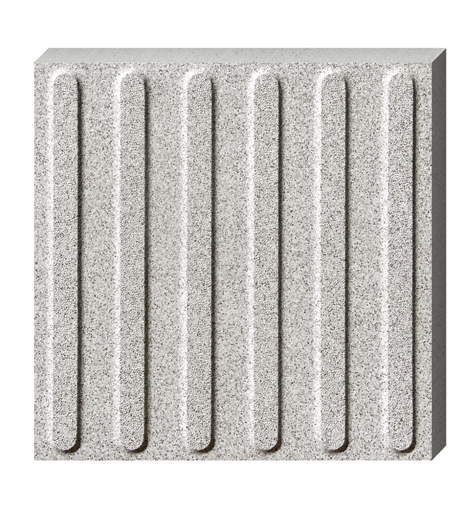|
In public places such as the streets, shopping malls, and subway stations where we walk every day, the seemingly ordinary ground beneath our feet actually hides a “secret weapon” thoughtfully designed for special groups of people — tactile tiles.

Tactile tiles, also known as guide bricks for the blind, have unique surface textures. There are usually two common types. One type has a surface covered with raised dots, which are regularly arranged, just like small “lighthouses” on the way forward for blind friends, guiding them to walk in a straight line. The other type has long-strip protrusions, and its role is crucial. It is often laid at key positions where turns are needed, such as intersections and stair entrances. Blind people can know that they need to change directions through the touch of their feet.
For the visually impaired community, tactile tiles are their “eyes”, giving them the courage to travel independently. When going out, every step is full of unknowns and challenges, but these tiles allow them to perceive the surrounding environment with their feet and move around the city with confidence. Imagine a blind person holding a white cane, walking steadily along the path paved with tactile tiles, accurately finding the bus stop, subway station entrance, and boarding the transportation smoothly. Behind this is the silent yet powerful support of tactile tiles.
Moreover, the wide application of tactile tiles also demonstrates the civilization and warmth of society. From urban planners to architectural designers, all parties are working hard to implement the concept of accessibility. In more and more newly built places, tactile tiles are incorporated into the design blueprints from the very beginning, and when renovating old facilities, people also don't forget to “pave the way” for blind friends. When we see that blind people can travel freely and integrate into social life, the whole city seems to become warmer and more friendly.
As ordinary pedestrians, we should also pay more attention to the tactile tiles beneath our feet when walking daily. We should not damage or occupy the areas where they are laid. Such small actions can reserve a safe and smooth travel space for visually impaired friends, allowing them to fully enjoy the beauty of the city and share the same blue sky. Next time when you go out, you might as well look down and give a thumbs up to these quietly dedicated tactile tiles, and also give a boost to the brave travels of blind friends.
|